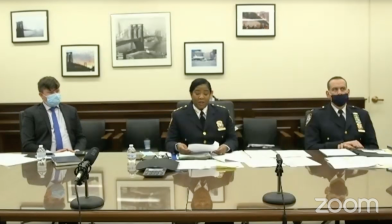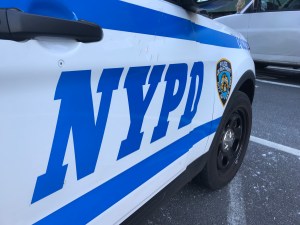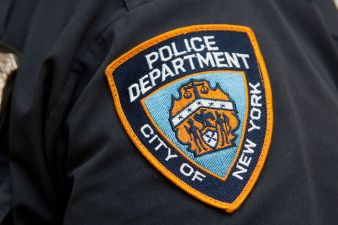NYPD’s Lax Crash Investigations May Violate State Law

Unacceptable. Absurd. “Next to useless.”
Those were just a few terms employed by City Council members today describing the NYPD approach to traffic enforcement. During a four-hour hearing, so packed with spectators and media that some were pointed to an overflow room to listen to testimony, council members grilled department brass on traffic crime prevention and crash investigations and questioned the low number of charges brought against drivers who injure and kill. Council members also heard heartrending testimony from victims of vehicular violence.
The hearing was co-chaired by James Vacca and Peter Vallone, who chair the council’s transportation and public safety committees, respectively.
“Driving in our city is a privilege, not a right,” said Vacca. In his opening remarks, Vacca noted that New Yorkers are more likely to be killed by a speeding driver than a drunk driver, and said that more city pedestrians are struck walking with traffic signals than against. “I want to know that the police department is doing to track down these scofflaws,” said Vacca. “We have to bring these people to their senses. We don’t accept gun violence as a way to die. We shouldn’t accept traffic deaths as a way to die either.”
NYPD officials remained on defense for most of the hearing, as they were quizzed by council members in sometimes heated exchanges. Most questions were fielded by Deputy Chief John Cassidy, executive officer of the department’s transportation bureau. Here are some highlights:
- Vacca asked if police currently charge drivers who speed or are involved in crashes with reckless endangerment, which Vallone — a former Manhattan prosecutor — said could be done with no changes to existing law. Susan Petito, a senior attorney for NYPD, responded that such data is not segregated, and the department therefore couldn’t say. More generally, Petito said that while reckless endangerment is “available as a tool,” police can’t normally determine probable cause if they don’t witness a violation.
- NYPD applies the same principle to VTL 1146, the statute that includes Hayley and Diego’s Law as well as Elle’s Law. NYPD protocol mandates that for an officer to issue a ticket under 1146, the officer has to witness the violation. An amendment to Hayley and Diego’s Law aims to close that loophole.
- Council members learned that there are just 19 investigators on the NYPD Accident Investigation Squad, and that there can be as few as one investigator on duty, depending on the shift. Since department protocol limits the use of the AIS to cases where the victim is killed or is deemed likely to die, and local patrol officers are not trained to perform in-depth crash investigations, cases that involve injuries that are not considered life-threatening receive only cursory attention. When asked by Vallone how it could be that a cyclist or pedestrian could have both legs broken with no possibility of charges against the driver, Cassidy replied, “I don’t set policy.”
- Public testimony from Steve Vaccaro, the attorney representing the family of cyclist Mathieu Lefevre, revealed that NYPD policy violates the law by deploying the AIS only in cases where the victim is killed or is deemed likely to die. “Vehicle and Traffic Law Section 603A requires that a fullscale AIS style investigation be made in all cases of fatality or serious physical harm,” Vaccaro said. “The NYPD patrol guide ignores this.” As NYPD officials had left the room by the time Vaccaro testified, Vallone said he would ask how the department wasn’t “breaking this law on a daily basis.”
- Council Member Jessica Lappin got into an animated discussion with Petito over traffic crash data. When Lappin asked why NYPD is releasing data in PDF form — and only after the council adopted legislation forcing the department to do so — Petito replied that the department is “concerned with the integrity of the data itself.” Petito said NYPD believes data released on a spreadsheet could be manipulated by people who want “to make a point of some sort.” An incredulous Lappin assured Petito that the public only wants to analyze the data to improve safety, not use it for “evil.”
- Each precinct has its own traffic safety team, headed by the precinct’s second in command. This came as news to Council Member Brad Lander, who said he had never heard of such a team, despite his attempts to engage the four precincts in his district in traffic-calming efforts. Likewise, after council members heard that each precinct has a traffic safety plan, Lappin asked to see the plans for her district. Petito told Lappin she wasn’t sure the plan was available.
- While NYPD officials had plenty of gross stats at the ready (one million summonses issued in 2011, etc.), time after time they were unable to produce data when asked. For example, they could not tell Council Member Dan Garodnick how many charges were issued in crashes where the victim was not killed or considered likely to die. “We should have that data,” Garodnick said.
- After most NYPD higher-ups and council members left the room, those remaining heard from traffic violence victims. Loved ones of Dashane Santana, Mathieu Lefevre, Rasha Shamoon and Stefanos Tsigrimanis related horrific accounts of loss, their pain compounded by callous treatment at the hands of NYPD. Michelle Matson, a cyclist struck by a hit-and-run driver, said that since she survived the crash — with a broken neck, among other injuries — the police essentially stopped working the case. Samira Shamoon, Rasha Shamoon’s mother, said that while her daughter is dead, the driver who killed her — who had a slew of violations on his record at the time of the crash — is driving the streets today. “God help the people of New York,” she said.
During a break in the victims’ testimony, Vacca said today’s hearing was one of the most “riveting” he has ever attended. Echoing the sentiment, Vallone assured those in attendance that their stories prompted today’s hearing. Said Vallone: “There will be laws arising out of this.”


